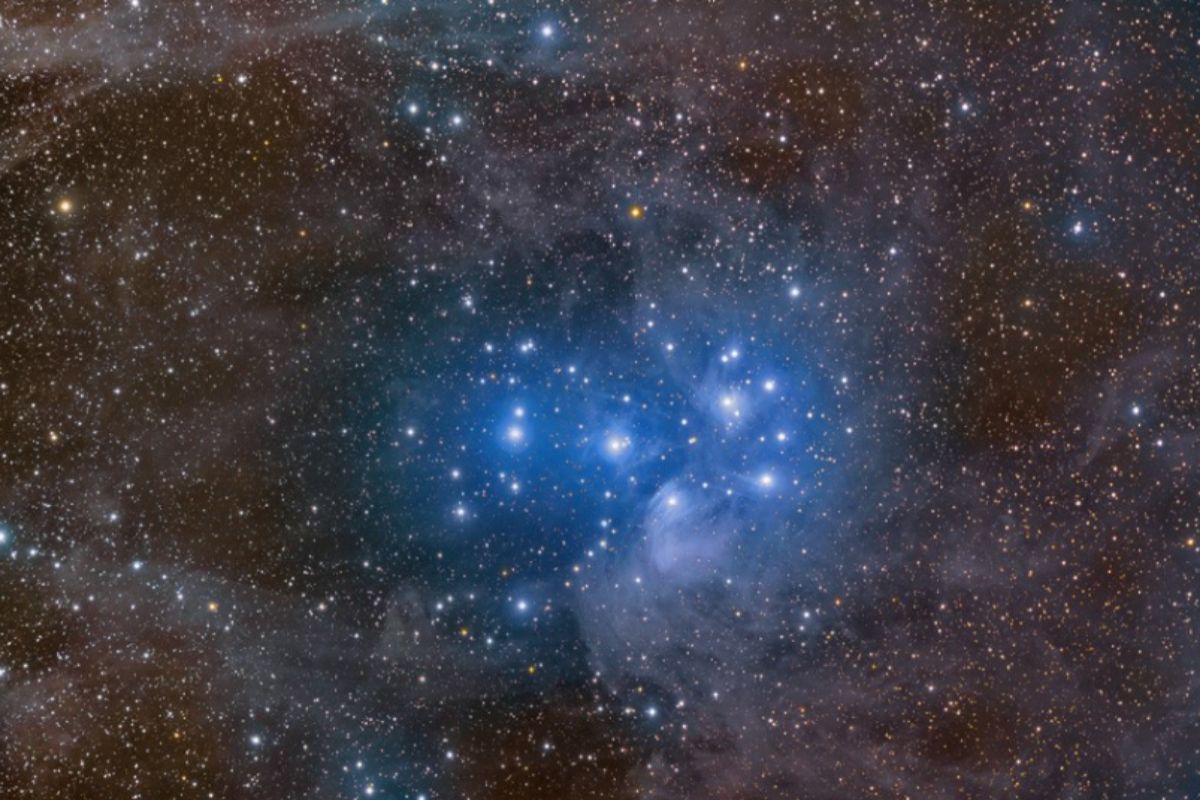Astronomy: a swarm of black holes
During the first part of the nights of this weekend, and the following days, we can see a spectacular conjunction of Mars with the Pleiades.
As March progresses, the red planet will be heading towards the position of Aldebaran.
Reddish and tramp
Mars has never been more fashionable.
In a few weeks we have witnessed the visit of three space probes to the small planet.
We cannot move there, but we can travel with our imagination: we can look up to the sky to see how fast the red planet moves against the starry background, which allows it to form beautiful conjunctions with the stars that are seen close to your line of sight.
This weekend Mars visits the vicinity of the Pleiades.
We can use the fixed position of this peculiar group of stars as a reference to observe the displacement in the sky, night by night, of the red planet.
No wonder the ancient Greeks gave the name 'planets' (which in Greek means 'wanderers' or 'wanderers') to these stars.
Those that are closer to us are those that show an apparent faster movement in the sky, which contrasts beautifully with the immobility of the stars.
To observe the conjunction you have to look up to the sky, to the west, at any time from the beginning of the night until just after midnight.
The proximity between Mars and the Pleiades means that they can be observed simultaneously with binoculars.
There is no need to worry if it was cloudy this weekend, as the approach will continue until mid-March, when the red planet will be halfway between the Pleiades and the reddish Aldebaran, the brightest star in the constellation of Taurus.
Stellarium / RB
Millions of times farther
Despite their apparent proximity in the sky, Mars, Aldebaran and the Pleiades are very different stars from each other and are at very different distances from Earth.
Mars is now about 210 million kilometers away.
Sometimes it comes as close to us as 50 million kilometers, making it the second closest planet (after Venus).
Aldebaran is also a nearby star, but in the context of its category: the stars of our Milky Way.
And it is that Aldebaran is about 65 light years away, that is, about 3 million times farther than Mars!
Finally, the Pleiades are 444 light years distant, that is, in round numbers, about 7 times farther than Aldebaran and 20 million times farther than Mars.
The Pleiades and its nebulaAPOD / R.
Bernal
Like wallflowers, says Sancho
The Pleiades are one of the most distinctive groups in the sky.
Although there are seven stars visible to the naked eye, this group is a so-called 'open' cluster that is made up of hundreds of stars that can be studied with the help of the telescope.
It is thus known that the cluster is dominated by some very luminous blue stars, which are about one hundred million years old.
The cluster is embedded in a faint haze that glows from the reflection of starlight.
All civilizations, since the dawn of humanity, have been fascinated by this motley group of stars.
In Spain we popularly know them as the Seven Sisters and in Don Quixote they are mentioned as the Seven Goats.
Sancho speaks of them, in the second part of the work, in an endearing way: "... we went to the part where the seven white goats are ... just as I saw them, I wanted to entertain myself with them for a while, what if I did not comply with it, it seems to me that it will burst. I come, then, and drink and what do I do? Without saying anything to anyone, nor to my master either, beautifully and quietly I got off Clavileño and entertained myself with the cabrillas, which are like wallflowers. and like some flowers, almost three quarters of an hour ... "
Like Sancho, Mars will entertain himself with the cabrillas, but for a couple of weeks.
Let's take advantage of the last weeks of winter to entertain ourselves too, looking at the sky, forgetting our daily worries, even if only for "three quarters of an hour".
Rafael Bachiller is director of the National Astronomical Observatory (National Geographic Institute) and academic of the Royal Academy of Doctors of Spain.
According to the criteria of The Trust Project
Know more
Science and Health
science
StoriesMartemania: this is how the dream of colonizing the red planet advances
Interview'It is likely that there have been many other intelligent civilizations in the universe, although most will have disappeared '
Environment From sustainability to the new regenerative era
See links of interest
Work calendar
TD Systems Baskonia - Red Star
Sabadell - Albacete
SV Werder Bremen - Eintracht Frankfurt
Barça - Asvel Villeurbanne
Seville - Barcelona, live

